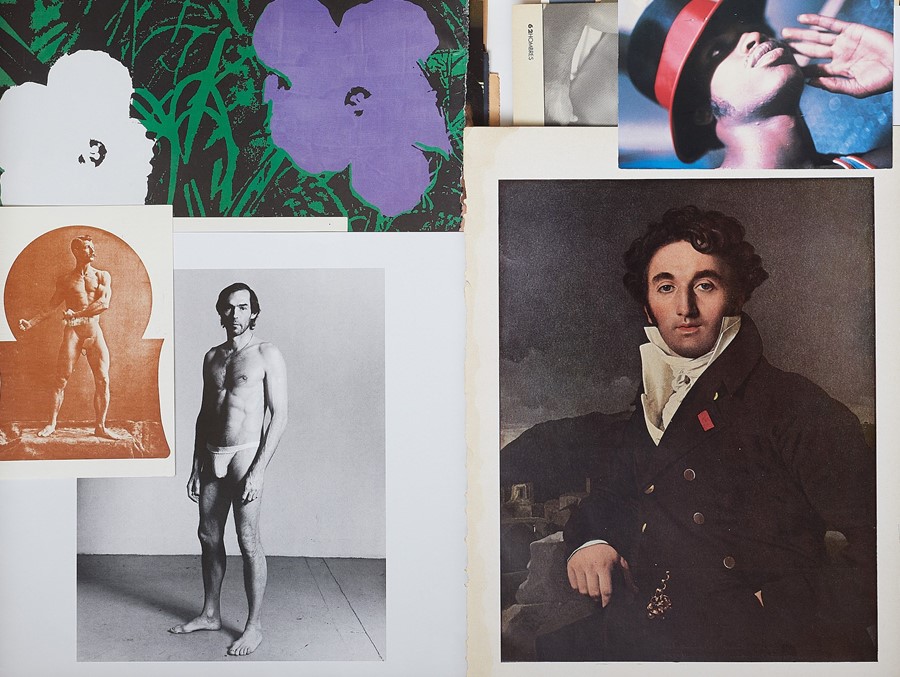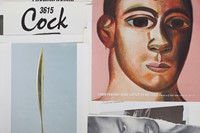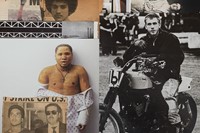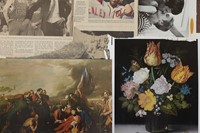The Drawer features over 70 collages made up of the legendary critic and curator’s ever-growing collection of printed matter, which resides in his apartment in New York’s East Village
It started casually enough: a cabinet drawer was opened, some loose odds and ends were shuffled around. Someone peered inside and grew curious … The memory of how Vince Aletti’s latest book project emerged is somewhat hazy, yet the contents of this particular cabinet drawer – filled with stray images and torn-out magazine pages, newspaper clippings and gallery flyers – clearly left a lasting impression on Bruno Ceschel, director of Self Publish, Be Happy. “He saw it as a book,” Aletti recalls by phone on a recent December afternoon, “which I never would've imagined myself. And I’m glad he did.”
Since his days spent documenting the emergent 1970’s New York disco scene in a regular column for Record World and working as the art editor and photography critic of the Village Voice, Aletti has enjoyed a multifaceted career as a curator and a writer for The New Yorker (among other publications). Over the decades, he’s amassed stacks upon stacks of print magazines (10,000 at least, he estimated for The New Yorker in 2019) that he lives alongside in his longtime East Village apartment.
The Drawer documents 75 collages photographed by Anushila Shaw – a collaborator whom Aletti first met when she was a student at NYC’s School of Visual Arts. “I wanted as much variety in each composition as possible,” says Aletti, noting that he sought to imbue each spontaneously assembled collage with “some kind of erotic spark.” Picture rock stars mingling with prominent writers and pro-athletes in their element, a legendary French New Wave filmmaker’s obituary and a late-aughts Artforum cover, all interspersed with shifting representations of masculinity, sensuality, and expressions of beauty.
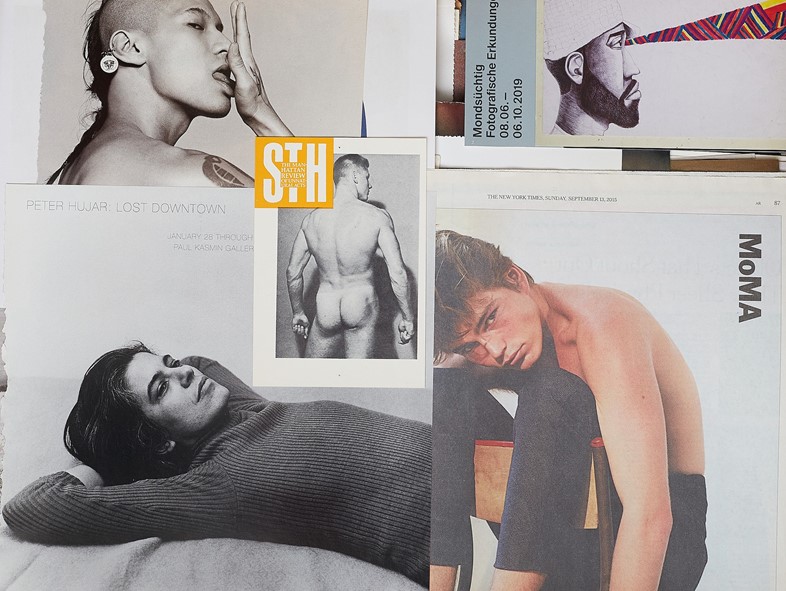
Each full-page spread, all photographed over a single afternoon, opens up an imaginative space to move through at one’s own pace, inviting viewers to draw their own instinctive conclusions about possible points of connection, tension, and conversation between images and subjects. Back-cover credits include photographers Diane Arbus, Richard Avedon, and Saul Leiter – visionaries whose work has, as Aletti writes, “inspired, excited, and provoked him over the years.” The book’s richly textured layers of ephemera reward repeat viewings, urging us to revisit a chance detail or haunting gaze we may have missed at first glance.
Aletti’s appreciation for the cultural artifacts and photographs contained in magazines over time threads through his work. While he’s open to expansive interpretations of his latest book, there’s no denying the presence of Aletti’s insatiably curious lens throughout the publication, which found him playing the role of art director across dozens of visual arrangements. “In a sense, The Drawer is another kind of bulletin board for me,” Aletti says, with juxtaposed images given fresh contexts to come alive all over again on the page.
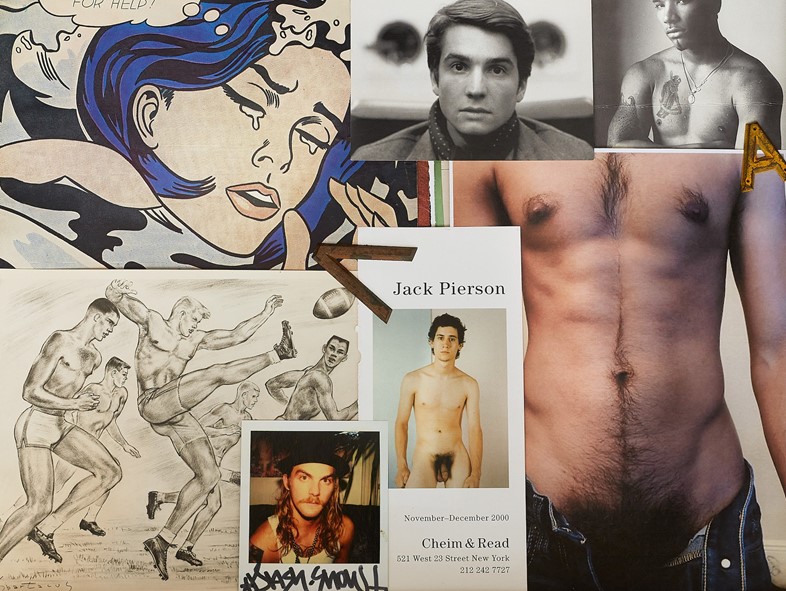
How has Aletti’s own relationship to printed ephemera evolved over time, since he first fell under the spell of Jean Shrimpton gracing the cover of Harper’s Bazaar (circa April 1965) in a shocking pink space helmet? “In the simplest way,” he says, “it’s opened [me] up to seeing so much more than I understood at the beginning, when I was looking at Harper's Bazaar and Vogue.” Between eBay, flea markets, and local bookshops, Aletti now has access to explore a lifetime’s worth of titles, many of which were either not available or significantly harder to track down via word of mouth alone when he first started collecting back in the mid-1960s. These days, Aletti lights up when discovering magazines from the 1940s and 1950s not previously on his radar, often buying them for their striking graphics and brilliant design alone. As his personal archive accumulates, “there’s really no justification,” he says, “except that I’m really glad to have these images as part of my image bank now.”
For Aletti, whose surrounding stacks and drawers are chock-full of rare print gems, “it’s always an educational process.” But also, he adds, and this is the key: “[it’s] never, never without pleasure.”
The Drawer by Vince Aletti is published by SPBH Editions and is out now.
